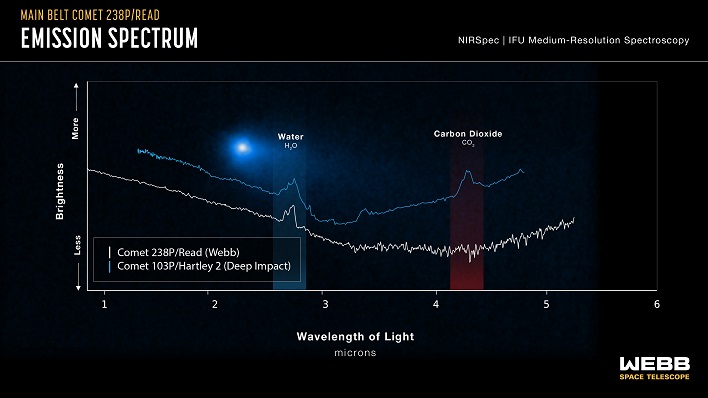NASA's Webb Telescope Discovers Water In A Rare Comet And Scientists Are Stunned

NASA's James Webb Space Telescope (JWST) has been providing scientists and astronomers with astounding images and breakthroughs into the mysteries of our solar system since its launch into deep space. However, with new answers often come new questions. Such was the case when solar system scientists delved deeper into Comet 238P/Read with JWST.
Comet Read is located in the main asteroid belt, but every once in a while emits a halo, or coma. It was one of the original three, in fact, to be used to establish the category of main belt comets.

"In the past, we've seen objects in the main belt with all the characteristics of comets, but only with this precise spectral data from Webb can we say yes, it's definitely water ice that is creating that effect," explained Michael Kelley of the University of Maryland, and lead author of the study published in the journal Nature. He added, "With Webb's observations of Comet Read, we can now demonstrate that water ice from the early solar system can be preserved in the asteroid belt."
While the new discovery delighted scientists, it also brought about another question of why it was missing carbon dioxide. Scientists have proposed two possible reasons for the missing carbon dioxide. One is that Comet Read had carbon dioxide when it was formed, but lost it due to the warmer temperatures over time. The second thought being Comet Read may have formed in a "particularly warm pocket of the solar system, where no carbon dioxide was available."
"Being in the asteroid belt for a long time could do it - carbon dioxide vaporizes more easily than water ice and could percolate out over billions of years," Kelley remarked.
Heidi Hammel of the Association of Universities for Research in Astronomy (AURA), and lead for Webb's Guaranteed Time Observations, hopes they can eventually answer the question, "Do other main belt comets also lack carbon dioxide?" She added, "Either way, it will be exciting to find out."
The new find is just the beginning. Scientists will now take all the data collected from Comet Read and see how it compares to other main belt comets. Objects in the asteroid belt are very small and faint, but with Webb, scientists can finally see what is happening with them and come to some conclusions.


